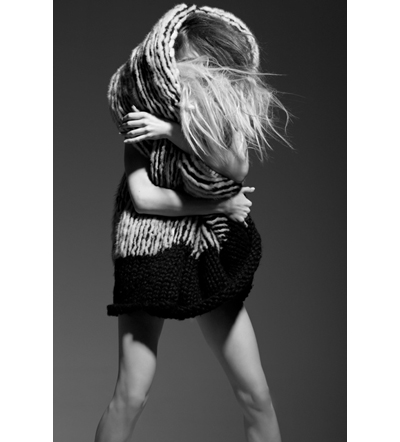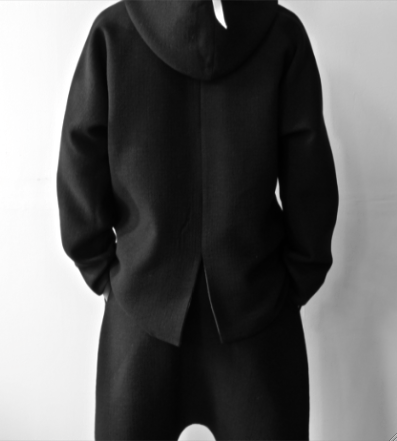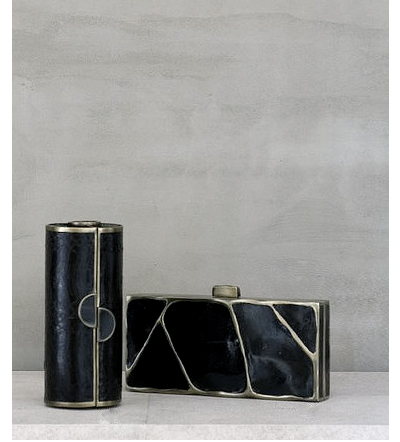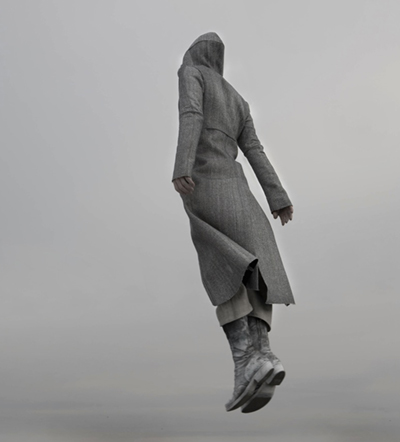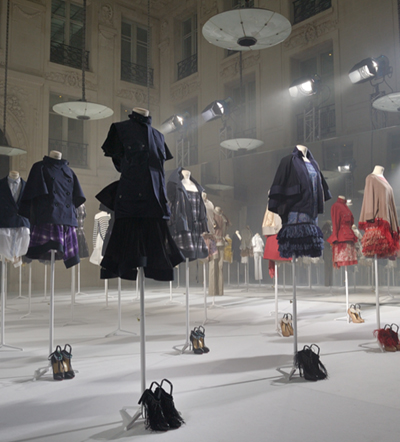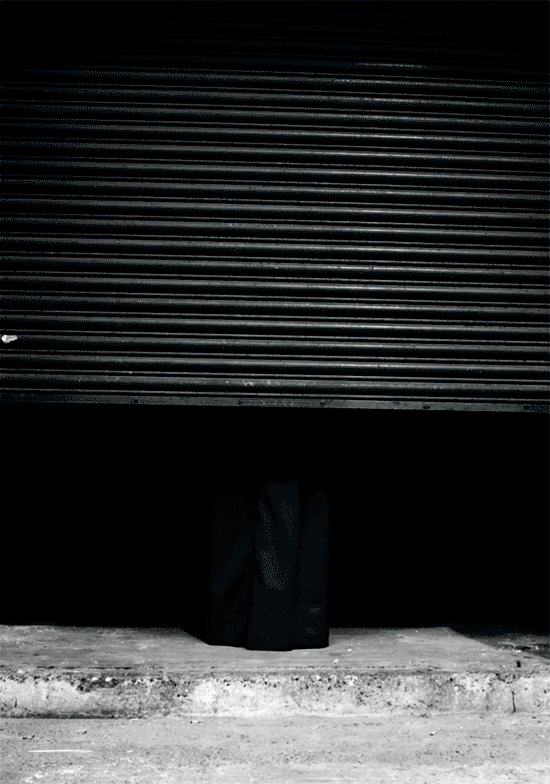
Image by Mikael Johansson
Newcomer Ellinor Malmgren’s aesthetic often gets called a certain 4-letter word typical of fashion designers who privilege risk over playing it safe: bold. The word seems appropriate enough given the types of materials Malmgren selects for her pieces, like stretch-infused leather and razor-thin metal –– and the very exacting color palette she insists they be (think deep Prussian blue, stark charcoal, and matte gold); if you factor in the extravagant silhouettes taking shape from her imagination, the word seems practically tailor-made.
The result of such “bold” thinking is a strangely-alluring debut collection that reads equal parts confident and mysterious, slightly futuristic – with a healthy subversive streak hell-bent on dismissing the standard notion of hourglass femininity – rather than yielding to it. Jackets with distorted shoulders and hip pockets wide like hula hoops aren’t exactly synonymous with ladylike style; here, they possess a strong appeal in spite of this (or perhaps because of it). Effortless comes in with what’s intentionally left out: ornamentation. It’s not that detail doesn’t interest Malmgren (her cage-like metal cuffs and neck pieces offer proof); it’s simply that communicating her point of view comes at its most natural when relayed through form rather than content.




 Facebook
Facebook Permalink
Permalink Digg
Digg Reddit
Reddit LinkedIn
LinkedIn StumbleUpon
StumbleUpon Tumblr
Tumblr
